The development of Intelligent Transport Systems (ITS) with fast-evolving technologies such as IoT and 5G can have a significant impact on the development of a nation and transportation industry in general. There is a convergence of segments that allows us to achieve this goal, but it also brings complexity and challenges, agreed the panellists Sushil Kumar, Deputy Director General (IoT), Telecommunication Engineering Center, DoT, Ministry of Communications; Dr. Punit Rathod, Lead-Technical Standards, Qualcomm Standards & Industry Organizations; Sharad Arora, Telecom, ICT & Security Expert, India and Mohan Raju, Vice President & Business Head – Smart Mobility, Jio Platforms Limited at special session on “ITS with 5G and beyond” during the Smart Mobility Conference
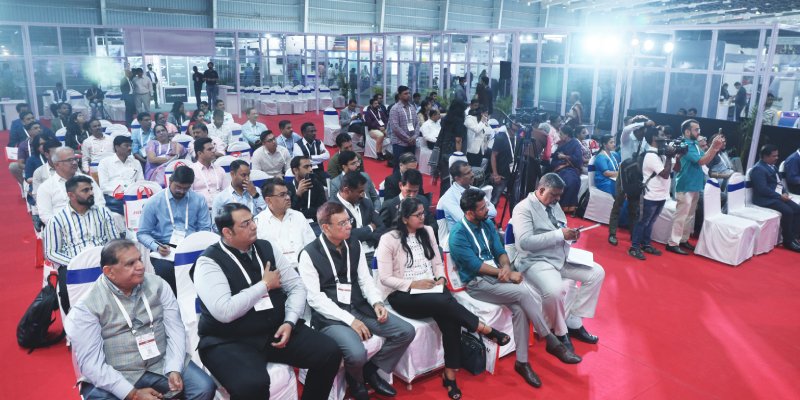
Setting the tone of the discussion, Mohan Raju stated that in the last five to six years, there have been many ITS setups deployed at the initial level as part of the Smart Cities mission. Increasingly, these systems enable convenience for citizens, such as multimodal transportation. But how do we seamlessly move from one mode of transport to the other? This leverages a complex gamut of technologies to make citizens’ lives easier.
“Right now, we are at a point where the 5G network is being rolled out at a breakneck pace across the country. As it moves along with certain standards, there will be a lot of newer use cases, such as V2V (vehicle-to-vehicle); V2I (vehicle-to-infrastructure); and V2X (vehicle communicating with another component or sensor).”
In India, autonomous driving is complex with a set of challenges. How do we see this evolving? With 5G coming in, autonomous driving will see the light of the day, and will also pave for 6G. These are some of the use cases that we will see at a vehicle level. “When vehicles start communicating at a city level, there will be an increase in the inflow of data. These data points can be used to generate services like traffic management and air quality index management. How can this be harnessed through a central control room to offer services like smart parking at a consumer level?”
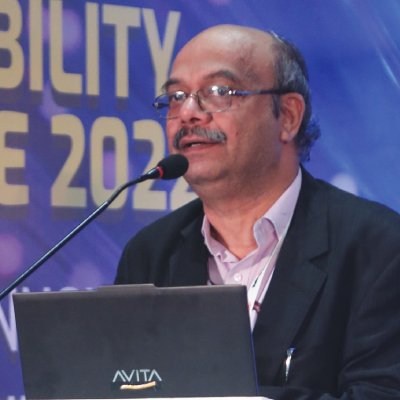
“We hope the Ministry of Road Transport and Highways; DoT and TEC will work together along with the telecom service providers for implementing the intelligent transport system.”
–Sushil Kumar
Smart Infrastructure for Smart Transportation
With 50% of the total population of India living in cities, urban areas face many challenges. These may be addressed by using technology like IoT and ICT infrastructure. There is a need to create smart infrastructure in various verticals including the transportation, power sector and healthcare sectors.
Automotive and transport is the backbone of the country, and an incredibly vital vertical in a Smart City. Today, smart devices provide data in real-time which can be analyzed using AI-ML algorithms to provide intelligence for use in various planning and operational activities. There are already smart applications utilizing 2G, 3G, and 4G technology, for instances, vehicle tracking, emergency call systems, traffic control, navigation, fleet management, asset tracking, manufacturing, and logistics. In a broader scenario, the intelligent transport system has telematics, infotainment and V2X – vehicle to everything, vehicle to vehicle, vehicle to infrastructure, vehicle to pedestrian and vehicle to network.
Although the country has 2G, 3G, and 4G technologies, these cannot provide the features of 5G technology, such as improved mobile broadband, ultra-reliable low latency communications, with a latency below one millisecond, and massive device connectivity with one million devices per square kilometer. This technology can be used to create a smart infrastructure in the automotive sector.
Sushil Kumar explained, “5G technology is one of the most emerging communication technologies and will be critical in the digitization, automation and connectivity of the society. Global projections show that 5G technologies will boost GDP, create jobs, and digitize the economy by offering mobile broadband, ultra-low latency, and massive device communication.”

“To have an open communication mechanism and to inter-operate, there is a need to harmonize not just the standards but also the technologies”
–Mohan Raju
Industry 4.0 & 5G Technology
To develop 5G technology, the department of telecommunications released the NDCP – National Digital Communication Policy in 2018, which mentions 5G, Artificial Intelligence, Robotics, IoT, and Cloud Computing. A number of verticals such as Agriculture, Intelligent Transport Systems, Multimodal Logistics and Smart Cities are also the part of NDCP as the technology may be used to create smart infrastructure in these verticals which in turn will help in improving the quality of life. To carry forward, DoT has recently released a policy for registering M2M service providers.
Sushil Kumar also mentioned the key initiatives taken by DoT for the development & launch of 5G technology. Some of these initiatives are like creating a high-level forum in 2017, Guideline for the experimental license in wireless communication issued in 2019, Trial licenses were given in 2021 to all the telecom service providers. The spectrum was auctioned in August 2022 for further allotment, and the 5G services launched in October 2022.”
He further added, a number of test labs have been developed in the country. Test beds are being developed at IIT Chennai. TEC which is developing the standards and the recommendations released 18 technical reports in IoT domain covering various verticals, communication technology and the security. Out of these, four are related to the automotive sector. Key recommendations are the part of security and standards. An important recommendation is the embedded SIM, which is part of AIS 140 and IS 16833 standards for Vehicle tracking device, among others, such as spectrum for cellular V2X.
Globally, 5G trials are in progress in the US and European Union, and the FCC has already allocated spectrum for C-V2X technology for the USA. China has also allocated spectrum and some of the projects are already in progress. In India, the spectrum has been allotted for V2X communication, Niti Aayog floated a policy paper on ITS in 2020, on this policy paper TEC/ DoT provided the comments.
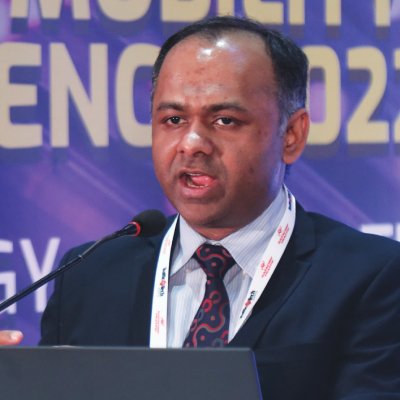
Vehicle-to-vehicle communication (V2V, V2P, V2I, and V2N) allows for a number of new capabilities in the automotive, improving driving conditions, enhancing safety, and improving the entire traffic environment.”
–Dr Punit Rathod
Power of the automotive ecosystem
Each mode of communication, such as V2V, V2P, V2I, and V2N, offers new capabilities for automotive applications, which improve driving conditions, enhance safety, and vehicle efficiency. From a vehicle-to-vehicle perspective there may be situations where the radar sensors or any of the onboard sensors cannot help the automotive, if they are beyond the visual range. This is where radio communication can come to aid in making certain decisions, to communicate information about traffic, safety, and ambulance arrivals to neighbouring vehicles.
Dr Punit Rathod, added, “It is important to note that the overall momentum of ecosystem towards transforming road safety and efficiency is underway. The industry efforts are being represented by 5G Automotive Association (5GAA), which is a convergence of all the traditional players, such as car manufacturers, connectivity companies, ecosystem partners that traditionally supply components that go inside automobiles, such as a digital stack, software, and road traffic systems.”
The recent national frequency allocation plan 2022, updated its allocation for the 5.9 GHz band to make it technology neutral; enabling the implementation of cellular V2X in India. This is where, as an industry, as an ecosystem, there is a need to have a more active role in making sure that we do not end up creating technology islands. This is because all the vehicles can connect to each other, not just with the same vendors. For instance, a Mahindra car can connect to a Tata car and a Tata car can connect to a Maruti vehicle. All of these together can connect to roadside infrastructure.”
As India moves forward with its 5G plan for ITS, we probably never thought that these kinds of use cases could come to fruition, which will add safety for us all as we travel on roads, and also enhance convenience.
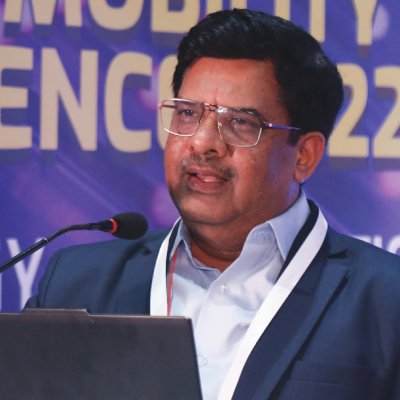
“The objective of oneM2M is to create a unified set of specifications that allow interworking across service verticals and sectoral standards. Major SDOs such as ITU and 3GPP acknowledge oneM2M, and in India, TSDSI has transposed, and TEC has endorsed oneM2M as national standards. The start-ups and industry have to take advantage of this, to ready oneM2M compliant horizontal application layers for global acceptability.”
–Sharad Arora
The need for a unifying standard
Given the current ecosystem, there is a need for unified standards. However, as we see today, there are so many standards that you need something to unify them, ISO, IEC, BIS, TEC, and so on for 3GPP.
For instance, if you are working with AIS 140, the device talks to your backend. The backend tells you how to trace, track, and report to the Government the data that the AIS 140 standard wants. Are the data feeds seamlessly interconnected? No, they are not. It is a huge problem because they create geographical and vertical silos. Sharad Arora, explained, “oneM2M was born with the objective to harmonize these things, and to have one standard across verticals like 3GPP and across horizontal application layers. In this case, you are able to have the option of interworking and having it work globally.
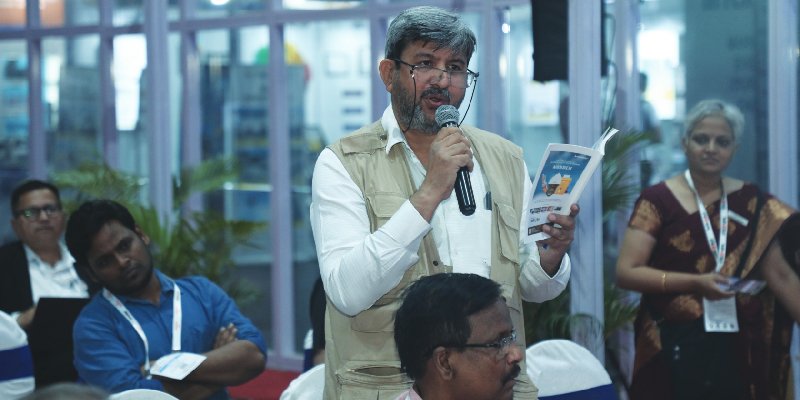
“oneM2M gives us a chance to have one uniform method of translating what is happening at the transport layer and at the application layer. Furthermore, I firmly believe that as India’s trust center matures, things like the generic bootstrapping architecture will be incorporated, which are both necessary for 3GPP as well as for oneM2M. So, if you develop things that are oneM2M compliant, you are future protected.”
India is perhaps one of those early countries that took out a M2M service provider registration guideline. So, if one provides any type of connectivity or a platform, one gets recognition from DOT by becoming a registered M2M service provider. By using oneM2M standards, you can manage the device, local application, and manage the data in the cloud or on the remote.
oneM2M is the common link between technologies that can make adoption happen in a standardized manner. This means that you have multiple devices interacting with each other, i.e., from the semiconductor to the network, to the infrastructure, and to the applications. oneM2M’s job is to harmonize the ecosystem and make it interoperable, so that they work together.
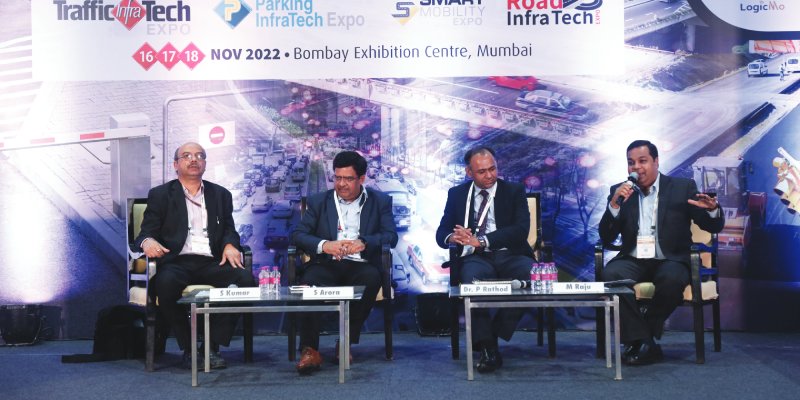
The way forward
Gone are those days when we could work on an ITS or a 5G enabled ITS in a silo. It is high time that all the stakeholders need to come together to make these use cases happen. While we talk on ITS and 5G, one of the fast-evolving verticals of intelligent transport is aerial mobility and that is where India has ambitions to lead globally.
On the network operators’ side, the telecom infrastructure on the 5G is getting rolled out fast. What will be offered is high reliability and low latency, the very two essential components for any of these use cases to go live in an effective manner. 5G will bring in that advantage, and the experience to a whole new level when it comes to intelligent transport systems in our country.
 TrafficInfraTech Magazine Linking People Places & Progress
TrafficInfraTech Magazine Linking People Places & Progress

